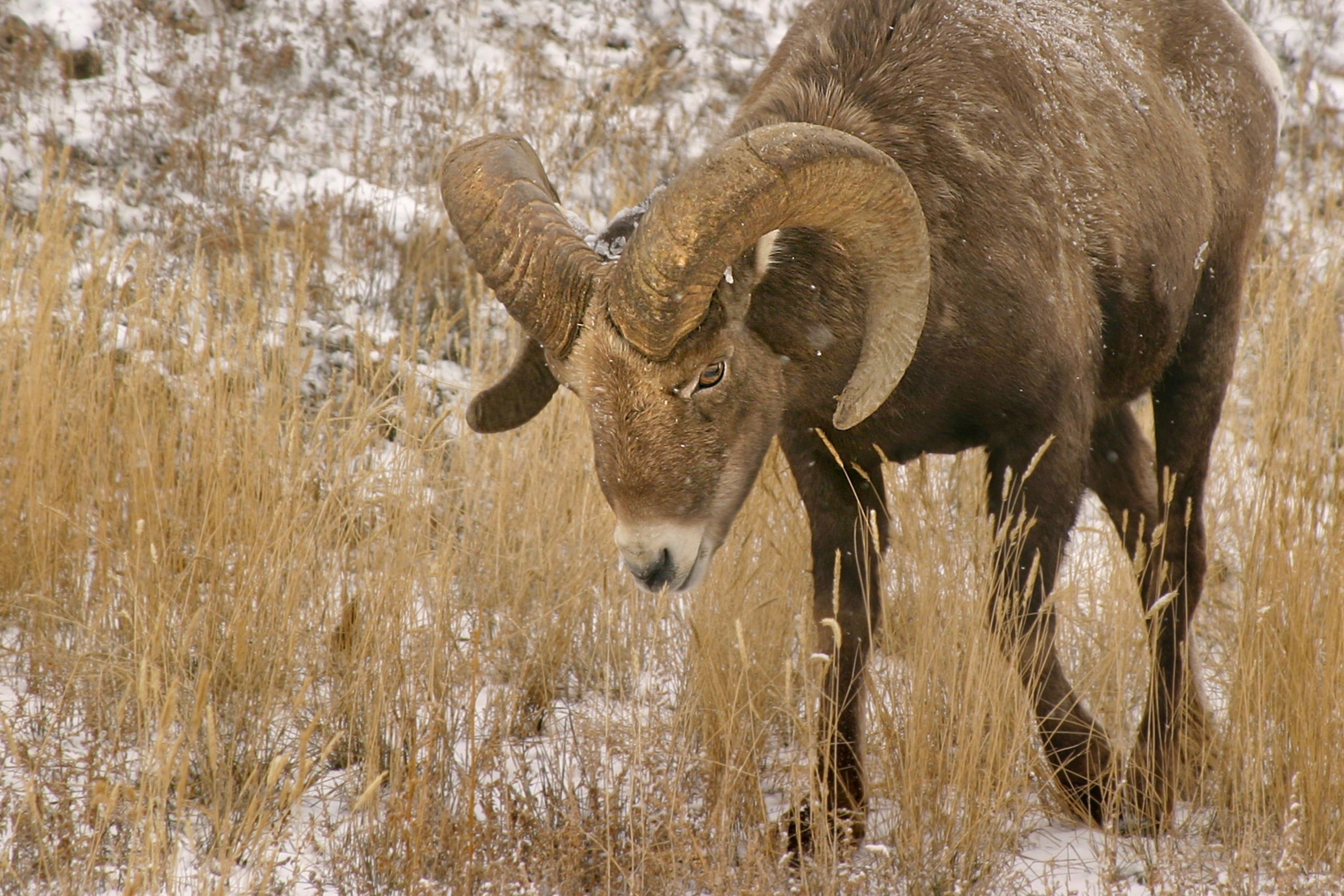Bighorn sheep
(Ovis canadensis)

Description
The bighorn sheep (Ovis canadensis) is a species of sheep native to North America. It is named for its large horns. A pair of horns might weigh up to 14 kg (30 lb); the sheep typically weigh up to 143 kg (315 lb). Recent genetic testing indicates three distinct subspecies of Ovis canadensis, one of which is endangered: O. c. sierrae. Sheep originally crossed to North America over the Bering Land Bridge from Siberia; the population in North America peaked in the millions, and the bighorn sheep entered into the mythology of Native Americans. By 1900, the population had crashed to several thousand, due to diseases introduced through European livestock and overhunting. Bighorn sheep are named for the large, curved horns borne by the rams (males). Ewes (females) also have horns, but they are shorter with less curvature. They range in color from light brown to grayish or dark, chocolate brown, with a white rump and lining on the backs of all four legs. Males typically weigh 58-143 kg (128-315 lb), are 90-105 cm (35-41 in) tall at the shoulder, and 1.6-1.85 m (63-73 in) long from the nose to the tail. Females are typically 34-91 kg (75-201 lb), 75-90 cm (30-35 in) tall, and 1.28-1.58 m (50-62 in) long. Male bighorn sheep have large horn cores, enlarged cornual and frontal sinuses, and internal bony septa. These adaptations serve to protect the brain by absorbing the impact of clashes. Bighorn sheep have preorbital glands on the anterior corner of each eye, inguinal glands in the groin, and pedal glands on each foot. Secretions from these glands may support dominance behaviors. Bighorns from the Rocky Mountains are relatively large, with males that occasionally exceed 230 kg (500 lb) and females that exceed 90 kg (200 lb). In contrast, Sierra Nevada bighorn males weigh up to only 90 kg (198 lb) and females to 60 kg (132 lb). Males' horns can weigh up to 14 kg (30 lb), as much as all the bones in the male's body. The Rocky Mountains and Sierra Nevada bighorn sheep occupy the cooler mountainous regions of Canada and the United States. In contrast, the desert bighorn sheep subspecies are indigenous to the hot desert ecosystems of the Southwestern United States and Mexico. Bighorn sheep generally inhabit alpine meadows, grassy mountain slopes, and foothill country near rugged, rocky cliffs and bluffs. Since bighorn sheep cannot move through deep snow, they prefer drier slopes, where the annual snowfall is less than about 150 cm (60 in) per year.
Taxonomic tree:







